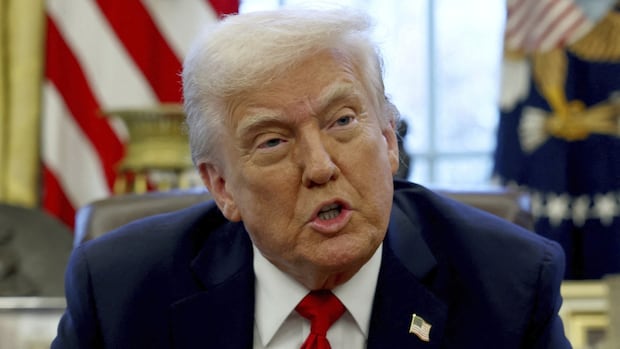Trump's Auto Tariffs: A Defining Factor in Canada's 2019 Election?
Editor’s Note: The impact of Trump's auto tariffs on the Canadian economy continues to unfold, significantly shaping the narrative of the 2019 Canadian federal election.
This article delves into the complexities of how these tariffs impacted the Canadian election, exploring the economic ramifications, political responses, and lasting consequences for Canada's automotive sector.
Why This Matters: The Impact of US Trade Policy on Canadian Politics
The imposition of auto tariffs by the Trump administration wasn't just an economic event; it became a potent political issue in Canada. This situation highlighted the vulnerability of the Canadian economy to US trade policy and the significant influence of international relations on domestic politics. Understanding this interplay is crucial for anyone interested in Canadian politics, international trade, or the impact of protectionist measures. This article examines the key aspects of this pivotal moment, analyzing its effect on the Canadian electorate and the broader political landscape.
Key Takeaways
| Factor | Impact on 2019 Canadian Election |
|---|---|
| Auto Tariffs | Became a major campaign issue, highlighting economic vulnerability |
| Economic Uncertainty | Increased voter anxiety and shifted political priorities |
| Political Responses | Shaped campaign strategies and policy debates |
| Public Sentiment | Influenced voter choices and election results |
Trump's Auto Tariffs: A Turning Point for Canada?
The introduction of Trump's auto tariffs in 2018 sent shockwaves through the Canadian automotive industry, a significant contributor to the Canadian economy. This wasn't simply about lost revenue; it represented a threat to jobs, investment, and overall economic stability. The tariffs' impact intensified as the 2019 federal election approached, transforming the economic issue into a major political battleground.
Key Aspects of the Tariffs' Impact:
- Job Losses and Economic Uncertainty: The tariffs threatened significant job losses in the automotive sector and related industries, fueling anxieties among voters.
- Shifting Political Priorities: The economic fallout forced all major parties to address the issue, leading to shifts in campaign platforms and policy debates.
- Increased Tensions with the US: The tariffs exacerbated already strained relations between Canada and the United States, becoming a key foreign policy issue.
- Negotiations and Trade Deals: Canada's response involved intense negotiations and a focus on securing alternative trade agreements to mitigate the impact of the tariffs.
Detailed Analysis: Navigating Economic Uncertainty
The uncertainty created by the tariffs had a palpable impact on the Canadian public. Concerns about job security and economic stability became central themes in the election. The major parties responded with varying degrees of assertiveness, from promises of robust negotiation to calls for more aggressive retaliatory measures.
NAFTA's Demise and the Rise of the New Trade Deal: A Critical Turning Point
The renegotiation of NAFTA into the USMCA (United States-Mexico-Canada Agreement) played a crucial role. While the new agreement ultimately addressed some concerns, the prolonged period of uncertainty surrounding its ratification further contributed to the heightened economic anxiety during the election.
People Also Ask (NLP-Friendly Answers)
Q1: What were Trump's auto tariffs?
A: Trump's auto tariffs were taxes imposed on imported vehicles and auto parts, primarily impacting Canada and Mexico, aimed at protecting American auto manufacturers.
Q2: Why were Trump's auto tariffs important to the Canadian election?
A: The tariffs created significant economic uncertainty in Canada, impacting jobs and investment, becoming a central campaign issue influencing voter choices.
Q3: How did Canadian parties respond to the tariffs?
A: Parties offered various solutions, ranging from negotiating with the US to exploring alternative trade agreements and promising support for affected industries.
Q4: What were the long-term effects of the tariffs on Canada?
A: The tariffs highlighted Canada's trade dependency on the US and prompted a renewed focus on diversification and economic resilience.
Q5: What is the USMCA?
A: The USMCA (United States-Mexico-Canada Agreement) is a revised version of NAFTA, addressing some of the concerns raised by Trump's administration.
Practical Tips for Understanding Trade's Impact on Politics
- Follow reputable news sources: Stay informed about trade developments and their political implications.
- Analyze party platforms: Compare different parties' approaches to trade issues and their potential economic impacts.
- Engage in informed discussions: Discuss trade policies and their effects with friends, family, and community members.
- Support affected industries: Consider how you can contribute to supporting Canadian industries affected by trade policies.
- Understand international relations: Trade policy is intertwined with diplomacy; understanding this relationship provides context.
Summary
Trump's auto tariffs played a significant role in the 2019 Canadian federal election. The economic uncertainty they created influenced voter sentiment, shaped political strategies, and highlighted Canada’s vulnerability to US trade policy.
Closing Message
The 2019 Canadian election serves as a reminder of how global trade policies can have profound impacts on domestic politics. Understanding these complex interactions is crucial for informed citizenship and navigating the evolving landscape of international relations. Share this article to inform others about this pivotal moment in Canadian history.
Call to Action (CTA)
Learn more about Canadian trade policy and its implications by subscribing to our newsletter! [Link to Newsletter Signup] Stay informed on current events and their impact on the Canadian economy.

